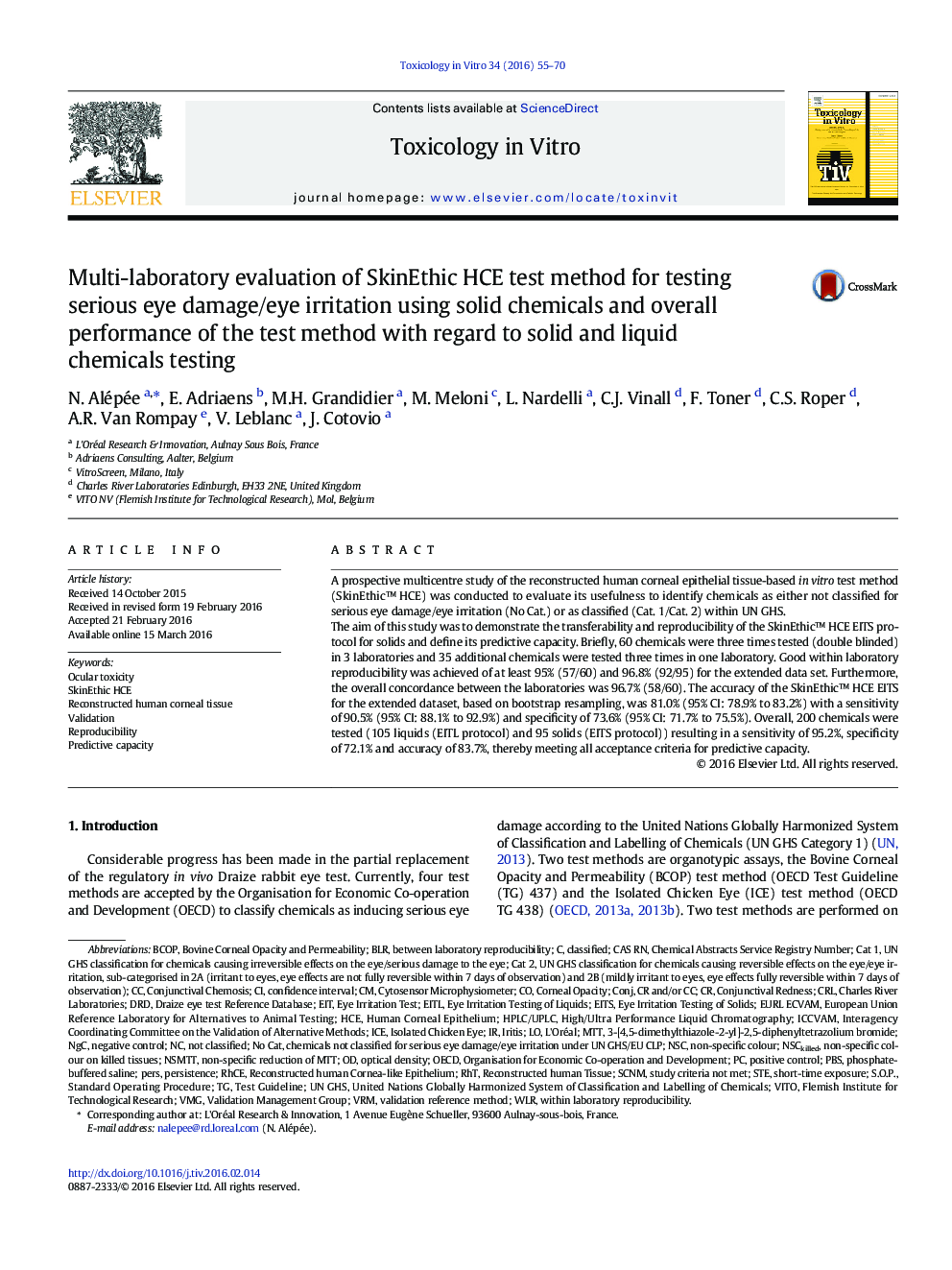| Article ID | Journal | Published Year | Pages | File Type |
|---|---|---|---|---|
| 5861105 | Toxicology in Vitro | 2016 | 16 Pages |
â¢SkinEthic⢠HCE method has been developed for the Eye Irritation Testing of Solids.â¢A validation study has been conducted with three laboratories on 60 substances.â¢Good within- and between laboratory reproducibility was achieved of â¥Â 95.0% and. 96.8%, respectively.â¢The accuracy was 81.0% with a sensitivity of 90.5% and specificity of 73.6% on 95 chemicals.â¢Overall, 200 chemicals were tested resulting in an accuracy of 83.7% meeting all acceptance criteria for predictive capacity.
A prospective multicentre study of the reconstructed human corneal epithelial tissue-based in vitro test method (SkinEthic⢠HCE) was conducted to evaluate its usefulness to identify chemicals as either not classified for serious eye damage/eye irritation (No Cat.) or as classified (Cat. 1/Cat. 2) within UN GHS.The aim of this study was to demonstrate the transferability and reproducibility of the SkinEthic⢠HCE EITS protocol for solids and define its predictive capacity. Briefly, 60 chemicals were three times tested (double blinded) in 3 laboratories and 35 additional chemicals were tested three times in one laboratory. Good within laboratory reproducibility was achieved of at least 95% (57/60) and 96.8% (92/95) for the extended data set. Furthermore, the overall concordance between the laboratories was 96.7% (58/60). The accuracy of the SkinEthic⢠HCE EITS for the extended dataset, based on bootstrap resampling, was 81.0% (95% CI: 78.9% to 83.2%) with a sensitivity of 90.5% (95% CI: 88.1% to 92.9%) and specificity of 73.6% (95% CI: 71.7% to 75.5%). Overall, 200 chemicals were tested (105 liquids (EITL protocol) and 95 solids (EITS protocol)) resulting in a sensitivity of 95.2%, specificity of 72.1% and accuracy of 83.7%, thereby meeting all acceptance criteria for predictive capacity.
